This tree is so common in the U.S. that you can see it planted on the streets, in parks, and in residential areas (due to its use as a specimen or for its dense shade). But it’s actually native to the Eastern U.S. It prefers moist soils, so it grows near creeks, streams, and ponds. What’s interesting about this seemingly average plant is that it has tons of survival uses. So have you guessed what tree it is? Well, I’m talking about the American basswood tree, also known as the American linden (from Latin Tilia americana).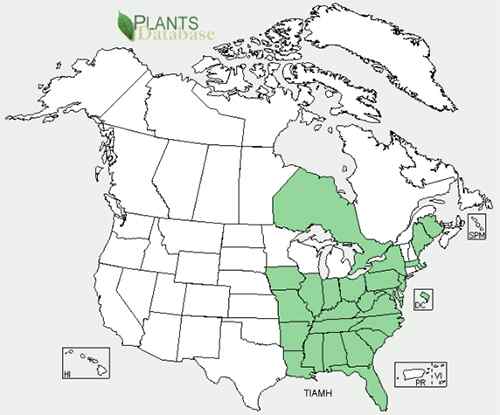
Natural Range
In extreme survival situations, since you’re in the great outdoors, all you’ll need is trees. They provide an immeasurable number of materials that are indispensable to survival and supply elements for all four core survival priorities: shelter, water, fire, and food. Additionally, studying as many tree species as possible, as well as their uses, is a worthwhile endeavor that will prove to be rewarding time and time again.
Related: 10 Trees Every Survivalist Should Know and Why
The basswood is one of my favorite survival trees because besides its abundant uses, it is one of the three genera of plants that is also a substitute for…chocolate. When mashed, the young fruits release a chocolaty odor and flavor. That’s why the basswood fruits were used as a source of cocoa during different periods of time in European history.
Identification
But now let’s briefly discuss identification. The basswood has very specific features:
- It is 50 to 80 feet high and 50 feet wide.
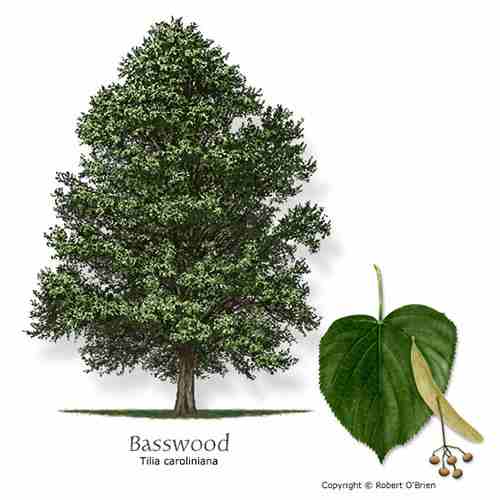
- The trunk is usually straight.
- Mature basswoods develop smaller sucker basswood trees at their base (which is how I identify the tree during the cold season when their leaves are gone).
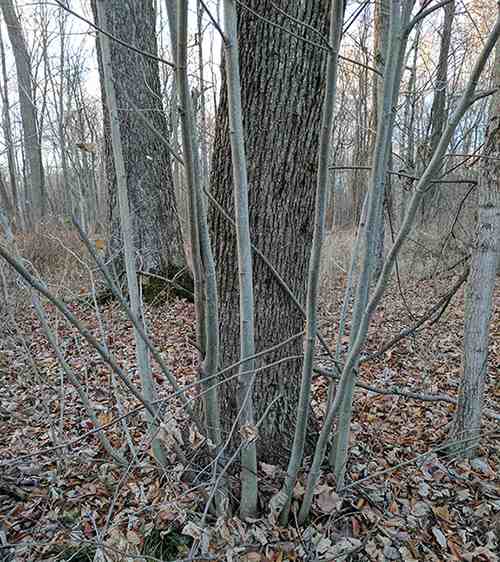
- The bark is dark grey; it becomes full of furrows and ridges with age.
- The leaves are large and heart-shaped and they have toothed margins, while the young leaf buds are dark red.
- One of the most distinctive features is the so called “tongue.” This is a leaf shaped like a tongue that grows at the base of the regular heart-like leaves on mature basswoods. During the entire summer, the tongue leaf develops small fruits that are hard, look like nuts, are yellow, and are accompanied by aromatic flowers.
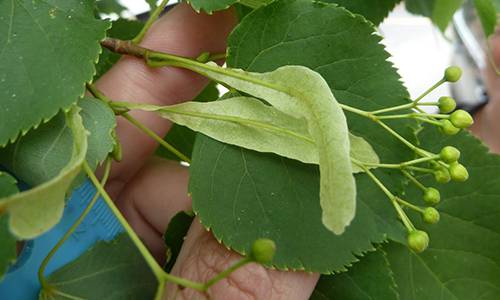
Basswood Survival Uses
Now that we’ve established how to identify the tree, it’s time to discuss its usefulness when SHTF and in general. For example, one of the most important features is that the basswood is entirely edible. The leaves can be consumed during the spring as salad. They have a slightly sweet taste, and they are refreshingly appetizing.
Shelter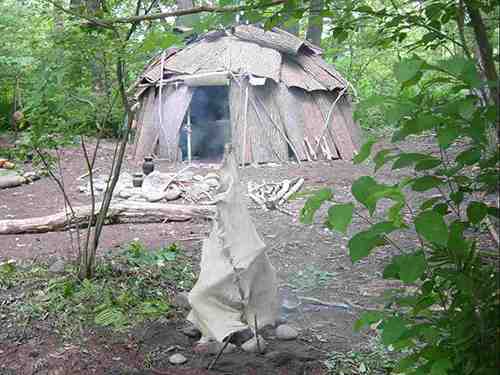
The basswood is not a very strong wood and is therefore not perfectly suitable for securing a shelter, but it can definitely be a good substitute. You’ll get some excellent shelter poles from the young, smaller sucker basswood trees that grow from the base since these sucker trees develop as straight, tall, flexible “branches.” So when you’re on the lookout for fallen branches, count on the sucker basswood trees and you’ll have a shelter structure in no time due to the wood’s soft nature. (That’s why the basswood is a favorite among wood carvers.)
Related: 3 Quick Shelters (The Last One is Invisible!)
Water/sap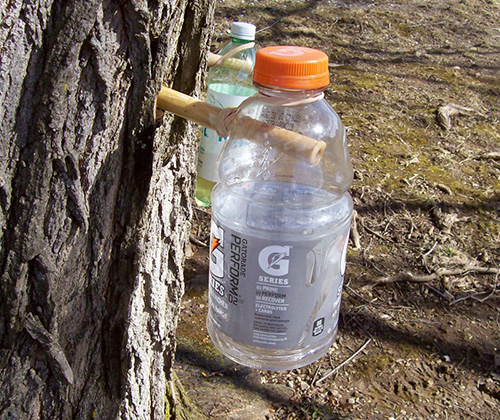
When you’re on the lookout for a water source, you’ll just have to find a basswood and you’ll have two sources of water: 1) the tree itself and 2) a proper water source.
The basswood can be tapped for sap just like a maple or a pine. Although its sap doesn’t contain very high amounts of sugar and it is not worth boiling it for syrup, it is very refreshing. Another great aspect is that these trees can be tapped very easily. So if you’re desperately thirsty, find a basswood and you’ll have a good dose of fluids in no time.
Related: Trees That Can Be Tapped For Sap And Syrup
As I said before, Basswoods prefer moist soils and water-rich environments, so if you see one, then it’s a clear sign that a water source is nearby. Look around for more trees, and they will lead you to a fountainhead.
Fire
The basswood tree is best for lighting a fire through friction due to its soft consistency, particularly the sucker trees and the young branches. Although it is not preferred for prolonged heat and warmth, the porous basswood grove very quickly generates a nice, hot ember, perfect for starting a fire in the wilderness. Here’s how to make a cool rocket stove for free.
Food & Remedies
The basswood tree is one of those plant categories that can be consumed entirely. Se here are the edible parts:
- Buds or flowers
- Young leaves
- Seeds
- Sap
- Cambium (bast or inner bark)
Leaves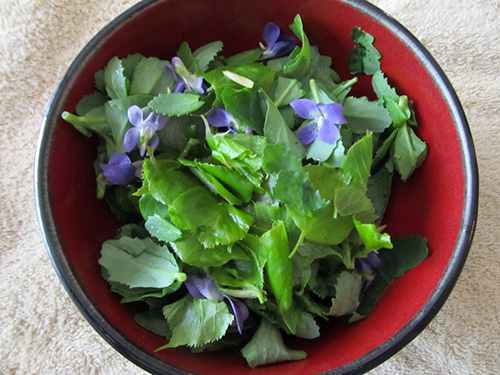
The young leaves can be consumed as a salad, and trust me, it’s delicious. I consume at least one basswood leaves salad per week during spring. But some might find them hard to ingest since these leaves are mucilaginous, especially when they start to mature in the late spring and throughout the entire summer, so I suggest you eat them when their size is similar to that of a coin. Additionally, basswood leaves are used for reducing fevers since they stimulate heavy sweating. Moreover, the leaves can be transformed into a flour after they’ve been properly dried and finely ground. For example, I made about one pound of flour out of a fully filled paper grocery bag with compressed leaves.
Related: Delicious Recipes Using Cattails: “The Supermarket of the Swamp”
Flowers
You can also add basswood flowers to your salad since they are edible. But my most preferred method of using these flowers is to make tea. You just have to steep a handful of flowers in a cup of very hot water and then let it rest for about 10 minutes, and you’ll have one of the most aromatic teas you’ve ever tasted. Additionally, this tea is still widely used in Europe due to its amazing health benefits. The flowers act as an antioxidant and are used to treat cold and flu symptoms as well as infections, hypertension, and headaches, especially migraines. They also act as a diuretic, an antispasmodic, and a sedative. Basswood tea is also known to relieve anxiety-related indigestion, irregular heartbeat, and vomiting. It is also the perfect stress-relieving tea since it’s used to treat insomnia, arteriosclerosis, and nervous tension. The tea is used in Austrian medicine for treatment of disorders of the respiratory tract, infections, and high blood pressure.
Related: The Most Powerful Antibiotics Known to Mankind
N.B.: If you have heart problems, consult your GP because extended use of flower tea may cause or aggravate heart issues. Additionally, as with every herb, there’s risk of allergic reactions. So be cautious and always consult with your GP when considering using herbal remedies.
Seeds
Basswood seeds, which usually develop a few weeks after flowering, are not only edible but they can be used as a substitute for chocolate and coffee. Yes, you read that right—chocolate! If you want to try to use them as a chocolate substitute, you’ll have to grind the immature seeds together with dried flowers until they turn into a powder, and then you’ll have to add a few drops of a neutral oil (grapeseed oil, etc.) until the powder turns into a paste. That paste is the chocolate substitute that’s been used in Europe for centuries. But keep in mind that the ground paste doesn’t keep very long, so it can’t be produced at a marketable scale. You’ll have to consume it in a day or two. However, the early explorers in Carolina affirmed that the final product was a “chocolate, not much inferior to that made from Cacao.”
When seeds mature, they start to lose that chocolatey flavor and gain a more coffee-like taste. So if you roast them at 300°F for 20 minutes and grind them when cool, you will have a substitute for coffee.
Bast/Inner Bark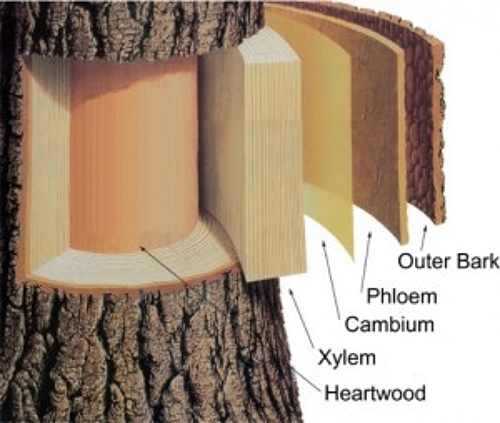
If you remove the first layer of bark you’ll discover the inner cambium, which can be consumed either raw, boiled, or ground into a powder. I’ve tried all versions, and I can honestly say that I like it all of these ways. When consumed fresh, it has a light, sweet, green-like taste, a bit similar to a cucumber. If you choose to boil the bast, it will become soft, and it’ll be perfect for chewing and digesting. The powder resulting from the ground dried bark is perfect for baking if mixed with flour, and it can also be used for soups, stews, and sauces. I was once told by an old-timer that he heard of families in the Great Depression who added basswood sawdust to bread dough as a filler to make rations last longer.
Wood burned to charcoal is used topically to treat edema or infection, such as cellulitis or ulcers of the lower leg.
When you’re harvesting the bark, make sure you don’t reap it from the trunk because you will damage the tree. Instead, find a limb or a sucker tree. You can cut it off completely and then peel back the outer bark to reach the sweet cambium.
Sap
The only time to tap a basswood tree is in early spring. The basswood can be tapped just like any other hardwood trees, but you’ll be delighted to discover that it’s even easier and faster to tap it due to its soft wood. Although the basswood sap contains only 1% sugar, it is amazingly refreshing. You can use the young sucker trees for tapping by chopping them into a thin branch with a sharpened point. With this spile, you can tap any other tree, such as maple, birch, and so on.
The sap can be consumed instead of water since it has a very low sugar content, but its great survival use is that it sooths skin irritations, wounds, burns, sores, and boils.
Cordage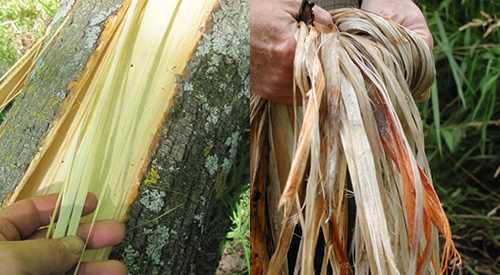
Bass comes from the word “bast,” which means rope or plant fiber in Old English, so the basswood bark makes for an excellently strong cordage. It can be easily said that this is the most incredible resource this tree provides. The best time to collect the bast for cordage is during spring, when the tree is filled with sap. If you’re handy enough and manage to cut the tree at the score line, you’ll see that you can remove the entire bark in one piece if the tree is young. If not, you can still grab very large pieces if peeled carefully from the bottom.
The best cordage is made from the inner bark fibers, which, when processed, are perfect for nets, baskets, clothing, traps, or any other “devices” needed for survival.
Tools and Others
The basswood is the tree preferred by every woodcarver due to its soft wood. The wood is so flexible and soft that it can be chopped with just a small knife in no time. Thus, the basswood is used for manufacturing a great variety of tools, from drinking straws, trap systems, floats for fishing, and blowing tubes for making coal-burned containers to smoking pipes and cooking utensils, such as spoons, forks, spatulas, chopsticks, ladles, etc.
You may also like:
 How To Make a Powerful Marigold Extract to Keep in Your Medicine Cabinet (with pictures)
How To Make a Powerful Marigold Extract to Keep in Your Medicine Cabinet (with pictures)
You Will Not Survive An EMP Strike Without This (video)

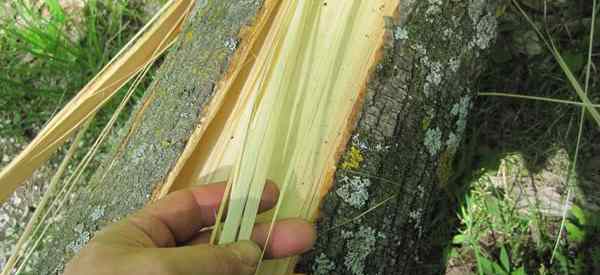













Who’d a thunk it?
Interesting article. I’ll plant a couple on our homestead for the future. However, it’s hyperbole to say, “Grows on almost every street in America.” Not on any street I ever lived on…currently, mesquite and live oak, yes, but not linden. And I’ve lived in TX, NE, LA, AZ, VA, NM, and FL.
It did say Most Eastern States & the Map shows them & FL. is on it. It looks like they grow as far West as the Mississippi River.
I live just north of Denver Colorado. Our neighborhood, which was build in 2000, has more then a dozen of these trees. Yes they were planted by the home owners 22 years ago as part of the landscaping. I planted two in my own yard years ago. Driving around the area I can find dozens more. Just keep your eyes open and you will find them.
we had one our front yard wen we live in Illinois. sad to say we had to remove it . but was surprise to how mush water drain out. my dad told me how they use to eat from that tree he never explain. though it was one of his jokes. now I know what he was referring to. he always had a way of having you think about stuff to find out for your self that way you would look it up and remember better for your self. . I miss this one so thanks for the imfo.
Thank you for sharing this childhood memory.
I’ve read that the leaves are edible, the flowers are edible and make great medicinal tea. The bast (inner bark) is also edible.
How can this be “every street in America, when the range doesn’t cover CONUS?
How do you make sure the tree survives all these invasive measures.
by harvesting vertically, rather than horizonally around , which would kill the tree because it stops the flow of sap, which is the tree’s life blood.
How do you make the cordage?
by braiding?
You can make cordage using the reverse twist method. It works best when the fibrous material is still wet from being removed from the tree. However, dry material can also be moistened by soaking in water as well. Here’s a video example. It’s pretty easy to do:
https://www.youtube.com/watch?v=j9pNBKek6gQ
that is TOO cool…I just watched the twist method to make cordage. Amazing…and simple.
can hardly wait to get out in the woods and start practicing.!!!
Very helpful info. Has anyone ever experimented with raising this tree in the north West?
Used to sell this tree at a large nursery near Spokane, WA. They did incredibly well in the Inland Empire. Have seen them as street trees many places all across the US. Gorgeous tree and the flowers have such a lovely scent! You can always tell when they’re in bloom. So easily identified by the tongue-shaped bract at the base of the flower cluster. Love this tree!
S spectacular Intel
Got honey bees? Basswood honey is unbelievably good, it almost clear and has a taste similar to cypress honey
Thank you for your valuable inputs
Might I add,Never girdle a tree. That is cutting around the entire trunk .This will kill the tree .Unless that is your intention.
Where would be a good place to purchase samplings. I’ve never heard of this tree in NM.
This is great information, If you know what you are looking for,
You can live off the land,
I wish i knew a lot of this stuff when I was in my teens.
now in my 60s. Read a lot of Mother Earth , But this is more advanced .
Thank You